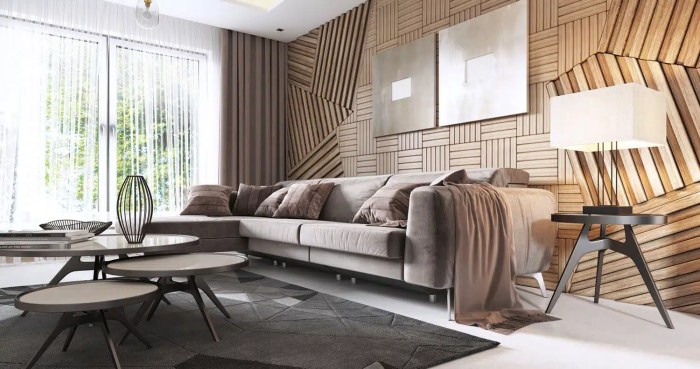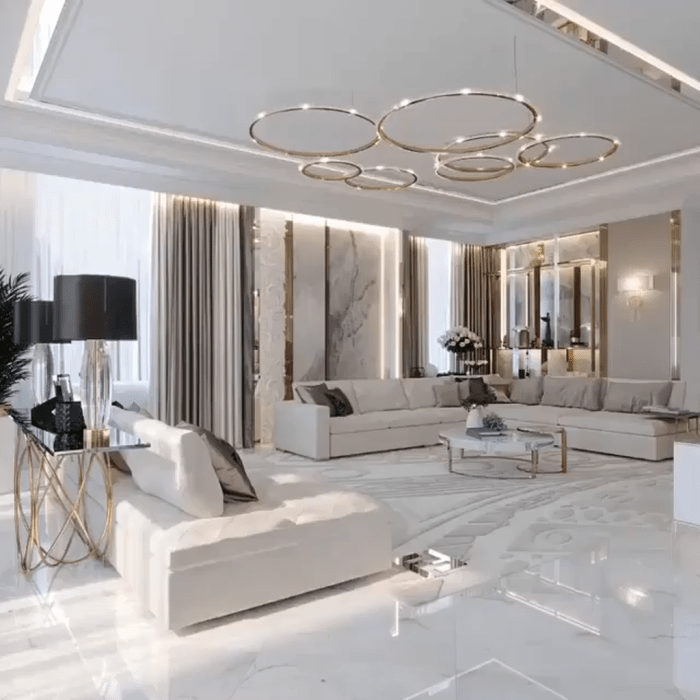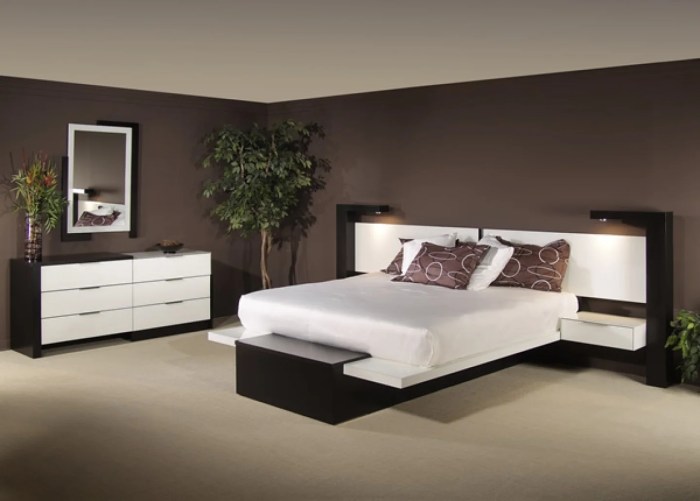Modern furniture represents a significant evolution in design, moving away from ornate styles of the past to embrace clean lines, functionality, and innovative materials. This aesthetic, born from the early 20th century, continues to influence contemporary interior design, reflecting a commitment to simplicity and a focus on the user experience. The inherent elegance and adaptability of modern furniture make it a timeless choice for homes and offices alike.
From the iconic Eames chair to the sleek lines of mid-century modern pieces, the history of modern furniture is rich with innovation and influential designers. The movement championed functionality over ornamentation, resulting in pieces that are both beautiful and practical. This focus on utility and enduring design has ensured the lasting appeal of modern furniture, making it a staple in contemporary homes and workspaces.
Modern furniture, a style that emerged in the early 20th century, continues to captivate homeowners and designers alike. Its clean lines, minimalist aesthetic, and focus on functionality have solidified its place as a timeless classic, constantly evolving while retaining its core principles. This comprehensive guide delves into the intricacies of modern furniture, exploring its history, defining characteristics, popular materials, and key design elements.
We’ll also address common questions and provide tips for incorporating modern pieces into your home.
The Evolution of Modern Furniture: From Bauhaus to Mid-Century Modern
The roots of modern furniture can be traced back to the Bauhaus movement in Germany during the 1920s. This influential school of art and design championed functionality, simplicity, and the rejection of ornamentation. Key figures like Walter Gropius, Marcel Breuer, and Mies van der Rohe championed the use of industrial materials and innovative manufacturing techniques, leading to iconic designs that remain highly sought after today.
The Bauhaus philosophy profoundly impacted subsequent design movements, notably Mid-Century Modern (MCM).
Mid-Century Modern, flourishing from roughly the 1930s to the 1960s, expanded on the Bauhaus principles, incorporating organic shapes, playful use of color, and a greater emphasis on comfort. Designers like Eero Saarinen, Charles and Ray Eames, and Arne Jacobsen created furniture that was both aesthetically pleasing and highly functional, often utilizing new materials like plywood and molded plastic.
Key Characteristics of Modern Furniture
- Clean Lines and Simple Shapes: Modern furniture avoids excessive ornamentation, favoring sleek, uncluttered forms.
- Functionality over Ornamentation: Each piece serves a clear purpose, with design prioritizing practicality and efficiency.
- Emphasis on Materials: High-quality materials, often showcasing their natural beauty, are a hallmark of modern design.
- Neutral Color Palettes: Modern furniture frequently utilizes a restrained color scheme, often featuring shades of white, gray, beige, and black.
- Open Space and Light: Modern furniture arrangements often prioritize open space and allow natural light to flow freely.
Popular Materials in Modern Furniture Design
The choice of materials significantly impacts the look and feel of modern furniture. Some of the most common include:

- Wood: Various hardwoods like oak, walnut, and teak are popular choices, often finished with a natural or minimalist stain to highlight the wood grain. Sustainable sourcing is increasingly important in modern furniture production.
- Metal: Steel, aluminum, and chrome are frequently used for their durability and sleek aesthetic. These materials can create a striking contrast with wood or upholstered elements.
- Leather and Upholstery Fabrics: High-quality leather and durable fabrics like linen, wool, and cotton are used in sofas, armchairs, and other upholstered pieces. Sustainability considerations are influencing the choice of fabrics.
- Glass: Glass coffee tables and shelving units are common elements, adding a sense of lightness and transparency to a space.
- Plastic: While less common in high-end pieces, plastic is used in some modern designs, often for its versatility and affordability. Recycled and sustainable plastics are gaining popularity.
Modern Furniture Styles: Exploring the Nuances
While sharing core principles, modern furniture encompasses various styles and sub-styles. Understanding these nuances can help you find the perfect pieces for your home.
Mid-Century Modern (MCM):
Characterized by organic shapes, tapered legs, and a focus on comfort and functionality. Think iconic Eames chairs and Saarinen tables.
Scandinavian Modern:, Modern furniture
Emphasizes simplicity, functionality, and natural materials like wood and light-colored fabrics. Clean lines and a minimalist aesthetic are key features.
Minimalist Modern:
Takes the minimalist approach to its extreme, featuring stark lines, neutral colors, and a complete absence of ornamentation. The focus is on essential functionality.

Contemporary Modern:
Represents the current trends in modern design, often incorporating innovative materials and technologies while maintaining the core principles of clean lines and functionality.
Incorporating Modern Furniture into Your Home
Integrating modern furniture into your existing décor requires careful consideration. Here are some tips:
- Start with a Focal Point: Choose a statement piece, such as a striking sofa or a unique coffee table, to anchor your design.
- Balance and Proportion: Pay attention to the scale and proportion of your furniture to ensure a harmonious look.
- Consider the Room’s Size and Layout: Choose furniture that complements the size and shape of your room, avoiding overcrowding.
- Layer Textures and Materials: Mix and match different textures and materials to add visual interest and depth.
- Add Personal Touches: Don’t be afraid to incorporate personal items and artwork to personalize your space.
Frequently Asked Questions (FAQ)
Q: What is the difference between modern and contemporary furniture?
A: Modern furniture refers to a specific design style that emerged in the early 20th century, characterized by clean lines, functionality, and minimalist aesthetics. Contemporary furniture, on the other hand, encompasses current design trends, often incorporating modern elements but also drawing inspiration from other styles.
Q: How can I make my modern furniture more comfortable?
A: Adding plush cushions, throws, and rugs can significantly enhance the comfort of modern furniture. Choosing upholstered pieces with high-quality padding is also crucial.
Q: Where can I find affordable modern furniture?
A: Many online retailers and furniture stores offer affordable modern furniture options. Consider exploring mid-range brands and looking for sales and discounts.
Q: How do I clean and maintain modern furniture?
A: Cleaning and maintenance instructions vary depending on the materials used. Always refer to the manufacturer’s guidelines for specific care instructions.
Q: Is modern furniture suitable for all home styles?
A: While modern furniture works well in contemporary homes, it can also be incorporated into other styles with careful planning. The key is to balance modern pieces with elements from other styles to create a cohesive look.
References
Call to Action
Ready to transform your living space with the timeless elegance of modern furniture? Browse our curated collection of modern pieces today and discover the perfect additions to your home!
FAQ Corner
What are some popular modern furniture materials?
Popular materials include wood (especially walnut, oak, and teak), steel, aluminum, glass, and leather.
How do I choose modern furniture that fits my space?
Consider your room’s dimensions, existing decor, and desired functionality. Measure your space carefully before purchasing and opt for pieces that complement your existing style.

Where can I find affordable modern furniture?
Many online retailers and home furnishing stores offer a wide range of modern furniture at various price points. Consider exploring both established brands and smaller, independent makers.
